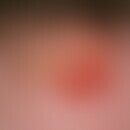Synonym(s)
Benign recurrent meningitis; Recurrent aseptic meningitis
DefinitionThis section has been translated automatically.
Special form of the so-called "benign chronic recurrent meningitis" (Diaz-Hurtado M et al. 2006).
EtiopathogenesisThis section has been translated automatically.
Herpes simplex viruses (more frequently HSV 2) are probably the trigger of the disease.
You might also be interested in
ClinicThis section has been translated automatically.
In general, the disease has a self-limiting course, although a recurrent course lasting several years is possible.
DiagnosisThis section has been translated automatically.
CSF typically contains pleocytosis with large endothelial cells (so-called mollaret cells), which are not pathognomic. HSV-2-PCR detection is occasionally successful.
Differential diagnosisThis section has been translated automatically.
Drug-induced aseptic meningitis (DIAM), which has identical symptoms and develops after administration of mainly NSAIDs (e.g. ibuprofen) and various antibiotics (Hopkins S et al. 2005)
LiteratureThis section has been translated automatically.
- Diaz-Hurtado M et al (2006) Vidal-Tolosa A. Drug-induced aseptic meningitis: A physician's challenge. J Natl Med Assoc 98: 457
- Hopkins S et al (2005) Drug-induced aseptic meningitis. Expert Opinion Drug Saf 4: 2985-2971
Outgoing links (1)
Herpes simplex virus;Disclaimer
Please ask your physician for a reliable diagnosis. This website is only meant as a reference.




